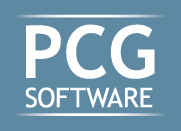The number of nurse practitioners (NPs) in the United States has doubled in the last decade, from 106,000 in 2004 to 205,000 in 2014, according to the American Academy of Nurse Practitioners. Similarly, the number of physician assistants (PAs) grew 219% from 2003 to 2013, according to the National Commission on Certification of Physician Assistants.
As the number of these nonphysician providers (NPPs) burgeons, the supply of physicians shrinks significantly. According to the Association of American Medical Colleges (AAMC), the United States will face a shortage of up to 90,000 physicians in the next 10 years.
To reduce physician workload and fill gaps in the physician shortage, many healthcare organizations are hiring more NPPs.
Nurse practitioners (NPs) and physician assistants (PAs) give patients the same standard of care. They practice in all 50 states and Washington, DC, with some regulations differing by state. PAs earn a bachelor’s degree followed by a master’s in physician assistant studies, health or medical science. NPs are nurses with advanced clinical training who have earned a master’s or doctorate degree.
Depending on state jurisdiction, both practice under the supervision or in collaboration with a physician, who has vastly more education, knowledge and experience. An uptick in errors and litigation among NPPs, however, may indicate they are not being vetted properly at hiring, nor supervised closely enough on the job.
To read the full article visit the American Journal of Managed Care.





